Coffee Cake Flavours: From Beans to Bites and Traditional Social Drinking
In North America, coffee cake refers to any type of cake that is intended to be eaten with coffee. But in particular, it refers to a usually unfrosted single-layer cake, with a sweet, cinnamon-infused flavour and a streusel topping. Due to its broad definition, there are many coffee cake flavours. This type of cake has been around for generations and can be eaten for breakfast, as a snack, or as a dessert.
In this blog post, we will delve into the origins of the cake, and popular flavours. We will also explore various coffee-drinking traditions from around the globe as a relationship-builder across different cultures.
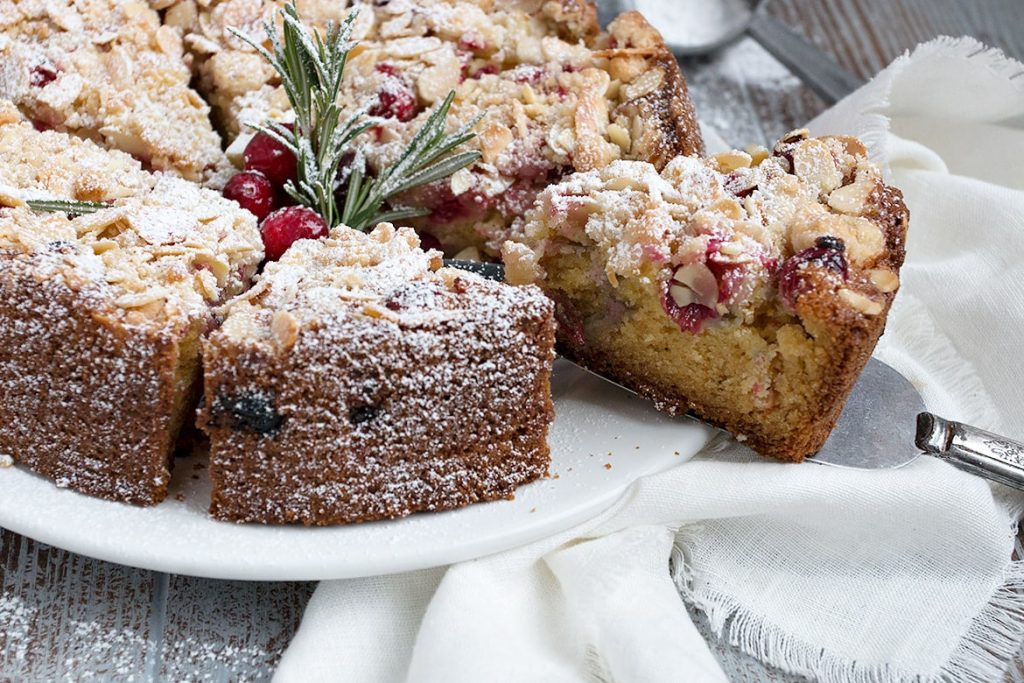
Cranberry almond cake (Seasons & Suppers)
Where Did Coffee Cake Come From?
The history might be more complex than one might initially assume. In fact, earlier forms of them were probably similar to different types of sweet bread that got popular in 17th-century Europe.
After the introduction of coffee to northern and central Europe, the German, Dutch, and Scandinavian communities began enjoying a kind of sweet bread with their favourite new drink. The new sensation soon turned into a tradition in which people would gather to enjoy coffee and engage in gossip.
By the 19th century, European coffeehouses regularly offered sweet bread, small cakes, and cookies alongside coffee, to counterbalance the bitterness of the drink. Nordic countries and cities across Europe witnessed an increase in the number of coffeehouses, which contributed to the widespread popularity of so many coffee cake flavours.
Coffee bread recipes found their way to America through immigrants. The recipes typically contained ingredients such as yeast, flour, dried fruit, and sweet spices. With the expansion of coffee plantations in size and number, the price of coffee decreased, and these cakes became a favourite treat for many people. Over time, American cooks modified the recipes to include other ingredients such as cheese, sugared fruit, yogourt, and sour cream, resulting in a denser, more cake-like texture.
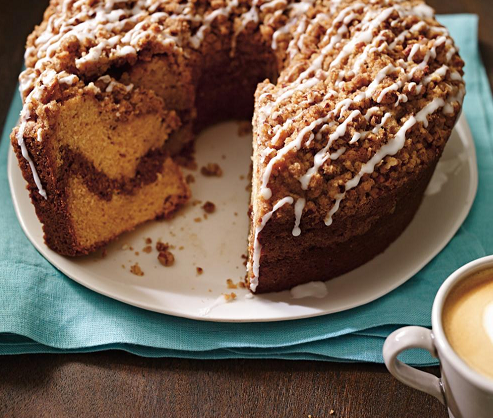
Cinnamon and pecan cake (Ricardo Cusine)
Is There Coffee in It?
It is a common misconception that coffee cakes contain coffee as an ingredient. Technically speaking, you can include coffee as an ingredient. But modern recipes have evolved to recommend obtaining the flavour from other ingredients like nuts, cinnamon, and other spices. The emphasis is now more on the taste as an accompaniment to a cup of coffee, rather than being a coffee dessert.
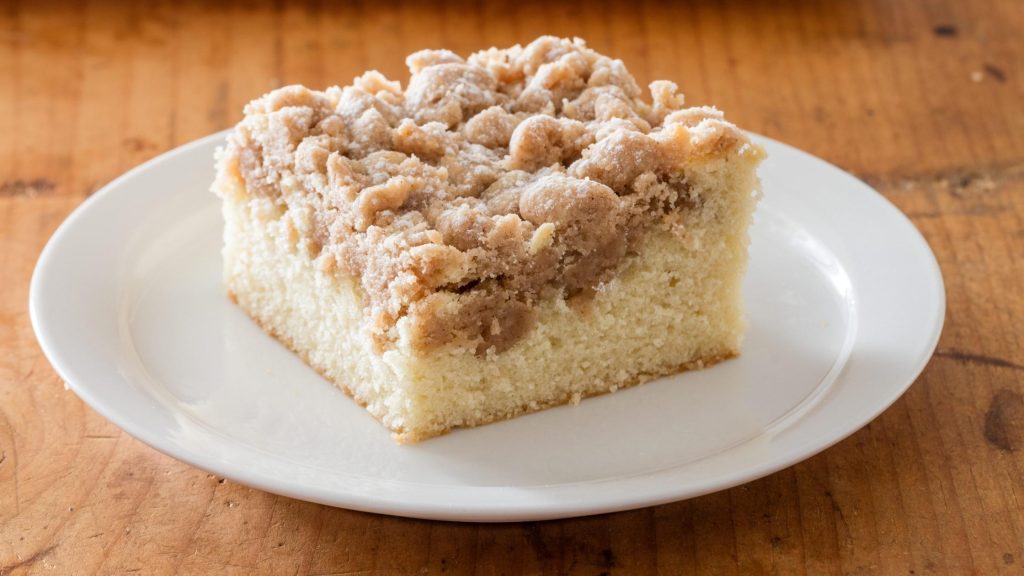
New York Style Crumb Cake, 55pluslifemag
Is It the Same as Crumb Cake?
The distinction between the two has been an ongoing debate among dessert enthusiasts. Both cakes feature a streusel or crumb topping, but there are potential points of difference.
When compared to a crumb cake, coffee cake typically:
1. Has Significantly Smaller & Fewer Crumbs
The crumbs are notably smaller, with a much lower crumb-to-cake ratio, limiting it to a very thin layer which makes it really difficult to be held alone by fingers without falling apart.
2. Is Softer in Texture
Crumb cakes are known for their crunchiness, while most classic coffee cakes have a softer texture due to having fewer crumbs.
3. Has Less Sugar
As coffee cake has a lower amount of sugar-coated crumb topping, it tends to be less sweet.
4. Includes a Much Broader Variety
The term refers to any cake that goes well with coffee. Crumb cake is only a specific cake covered in a thick layer of crumb topping.
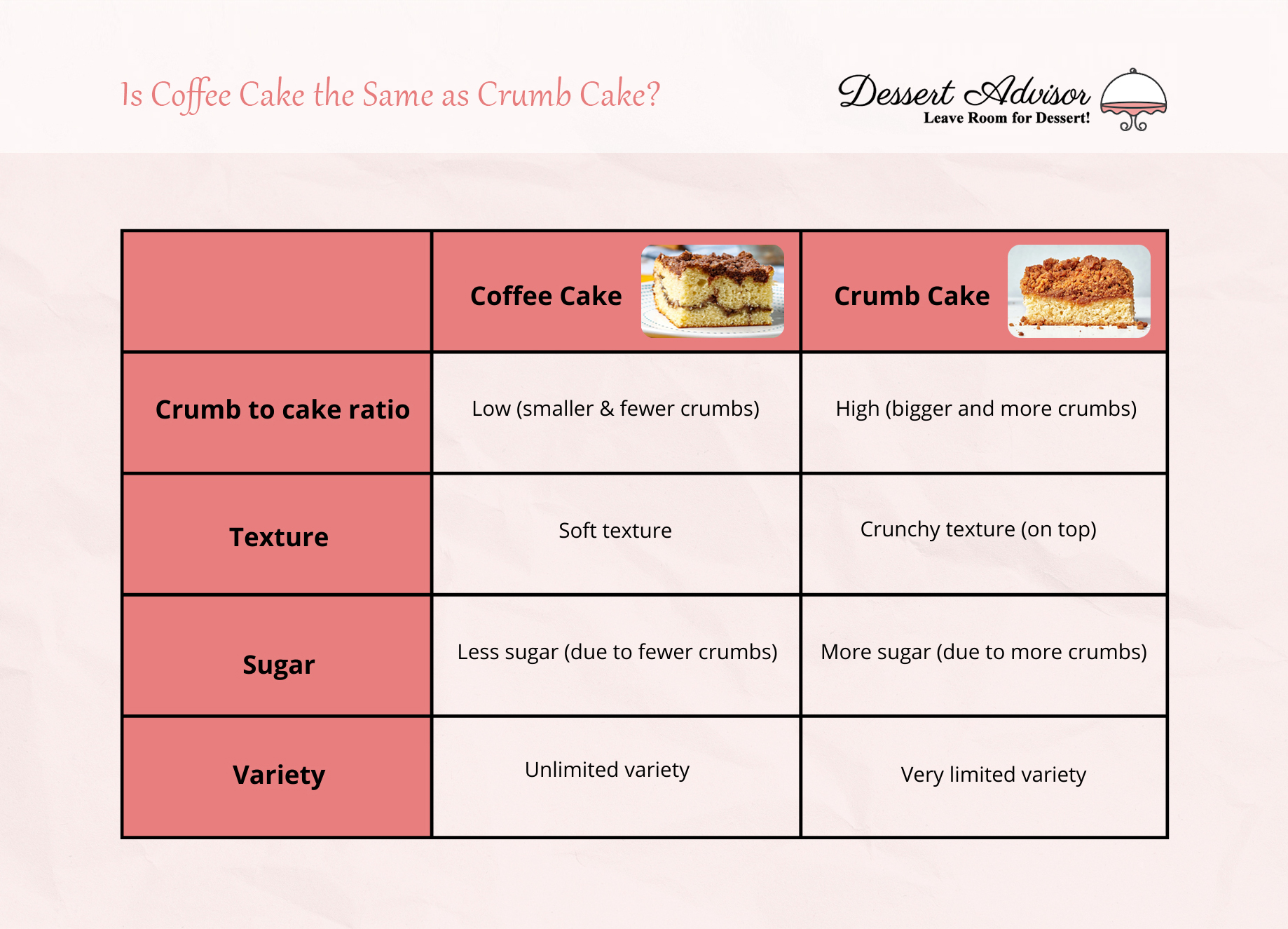
In other words, you can call a crumb cake a “coffee cake”, but not the other way around.
What Sets It Apart From Other Cakes?
Made from a blend of flour, sugar, butter, and cinnamon, the thin crumb is a signature element of the classic treat. One of the great things about this delicious cake is that there’s no need for any additional preparation or waiting time once it’s out of the oven. Unlike other cakes that require frosting or glaze, it is ready to eat as soon as it’s baked.
Modern additions to different coffee cake types include yogurt and cheese to increase the cake-like texture and further deviate from its bread origins. Other variations include walnuts, almonds, milk, fruits like blueberries, sliced peaches or sliced apples, applesauce, and coconut oil.
Different Coffee Cake Flavours You Need to Try
With the endless list of different coffee cake variations, there is something to suit every taste preference and dietary need. Here are some of the most popular variations:
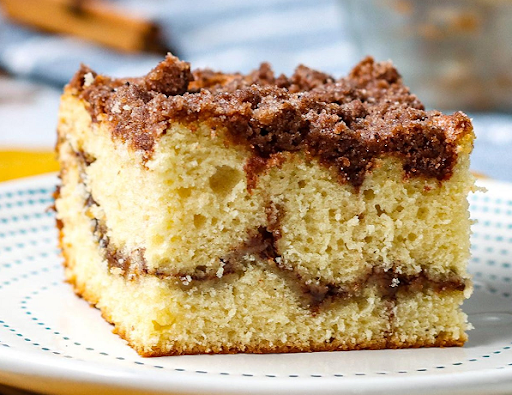
Classic: a rich yellow cake spiced with cinnamon and a thin layer of streusel on top (Tasty).
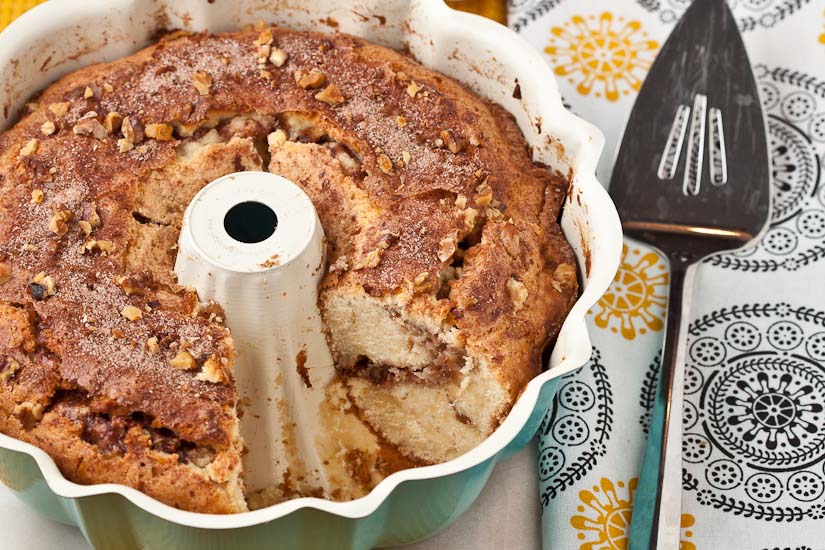
Cinnamon: a moist, buttery variation with cinnamon filling through the middle and cinnamon streusel on top; perfect as an afternoon snack, a breakfast pastry, or an after-dinner dessert (Chew out loud).
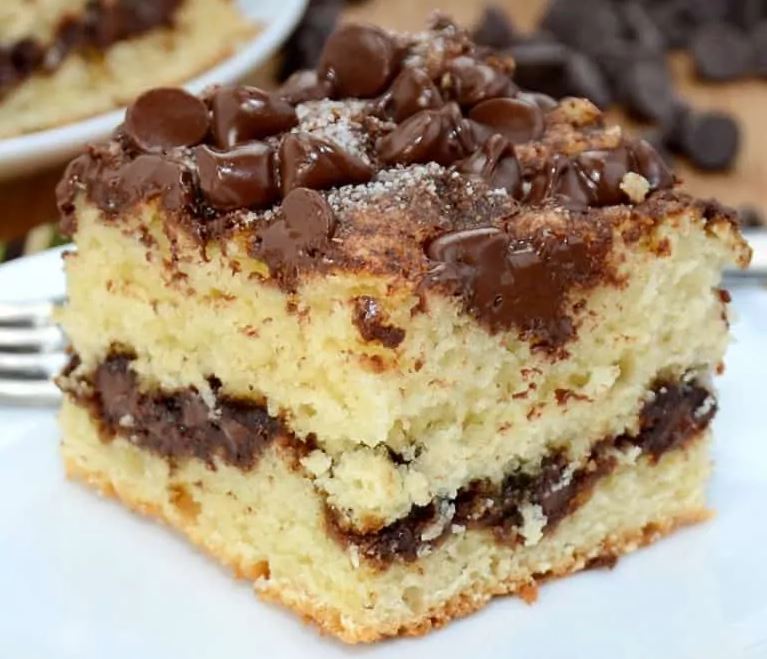
Chocolate Chip: a super buttery, and moist variation prepared with sour cream, loads of chocolate chips, and a cinnamon crumb topping; perfect for breakfast, brunch, or afternoon snack (Sweet pea’s kitchen).
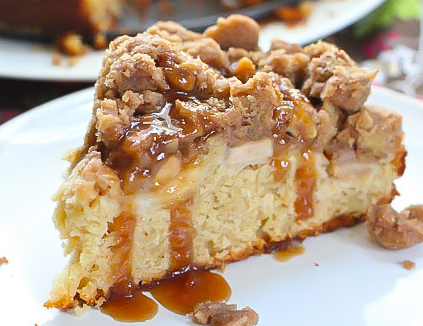
Caramel Apple: an extra moist brown sugar cinnamon cake prepared with diced apple, layered with sweet streusel, and topped off with salted caramel; perfect for breakfast, dinner, and everything in between (Eat good 4 life).
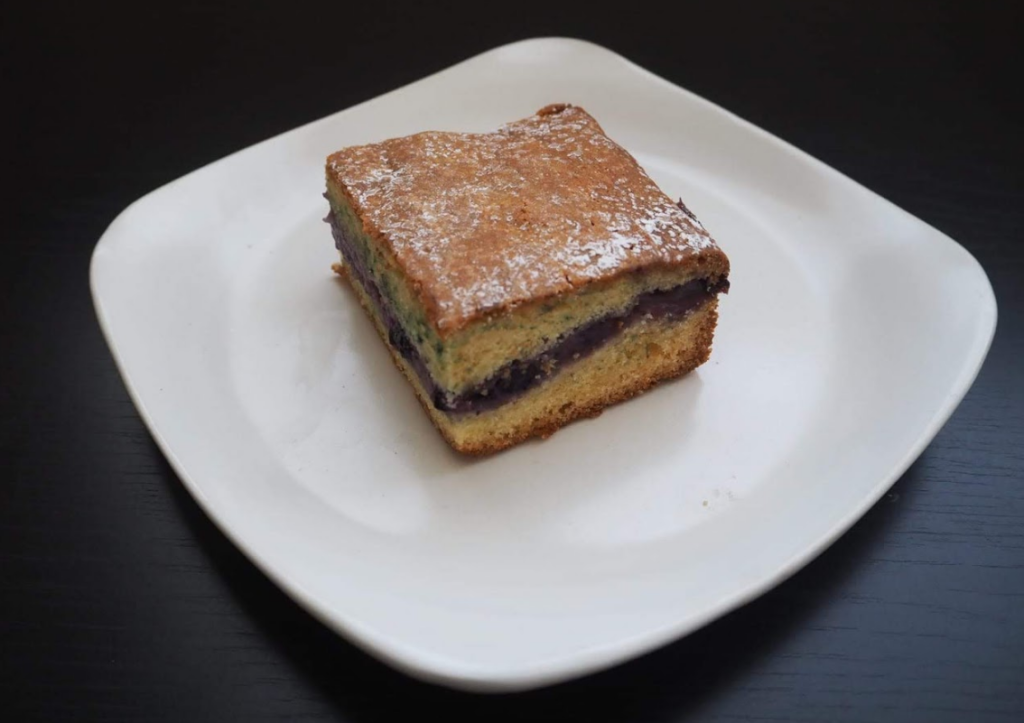
Raspberry: an incredibly moist cake with a buttery vanilla flavor, loaded with fresh or frozen sweet raspberries, and cinnamon streusel on top; perfect for breakfast, brunch, snack, or tea time (Cafe Cantinova).
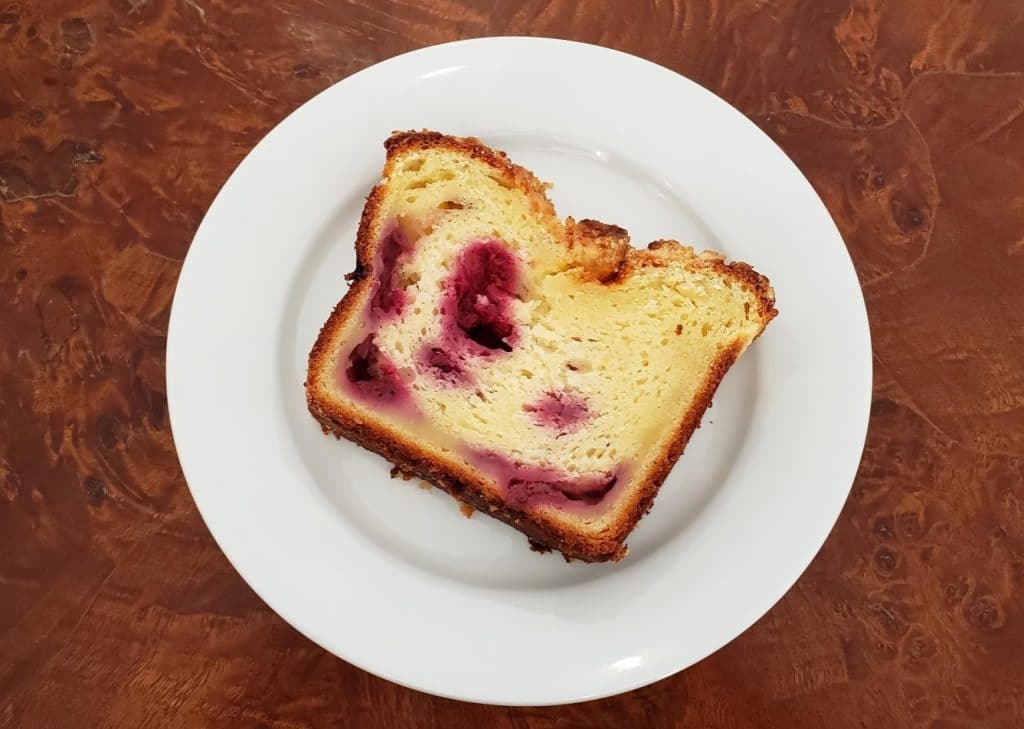
Cranberry Crumble: a tender buttermilk cake, studded with cranberries, topped off with buttery brown sugar crumbs and more cranberries, similar to old-fashioned summer berry buckles only with a bigger proportion of cake to crumb (Farine & Vanille).
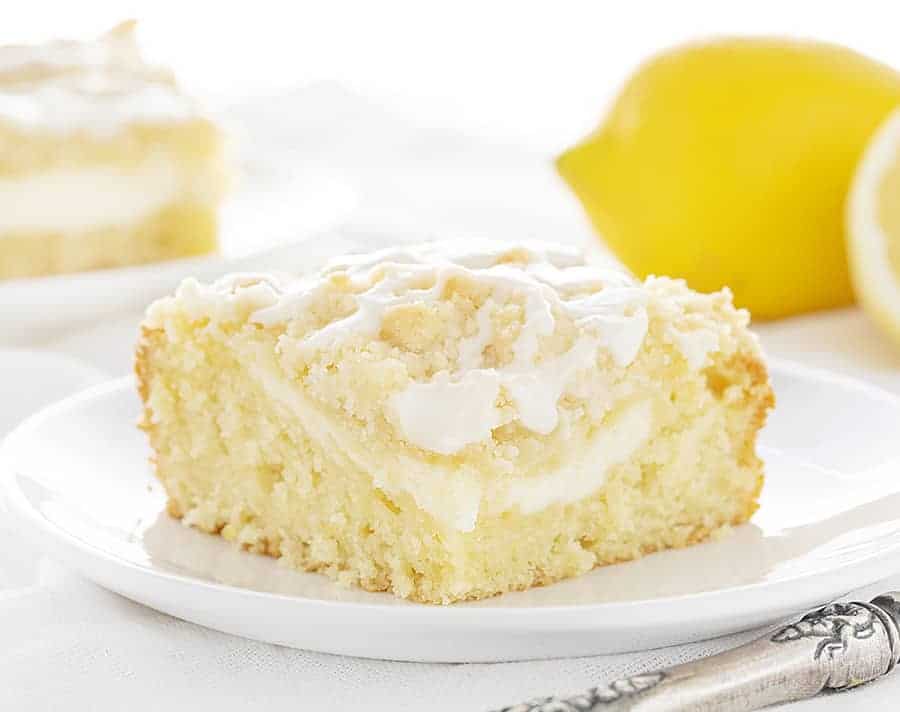
Lemon Cream Cheese: loaded with pure lemon flavour and cream cheese, with a creamy filling and a crumbly topping or a sweet vanilla glaze; perfect for a special occasion (I am baker).
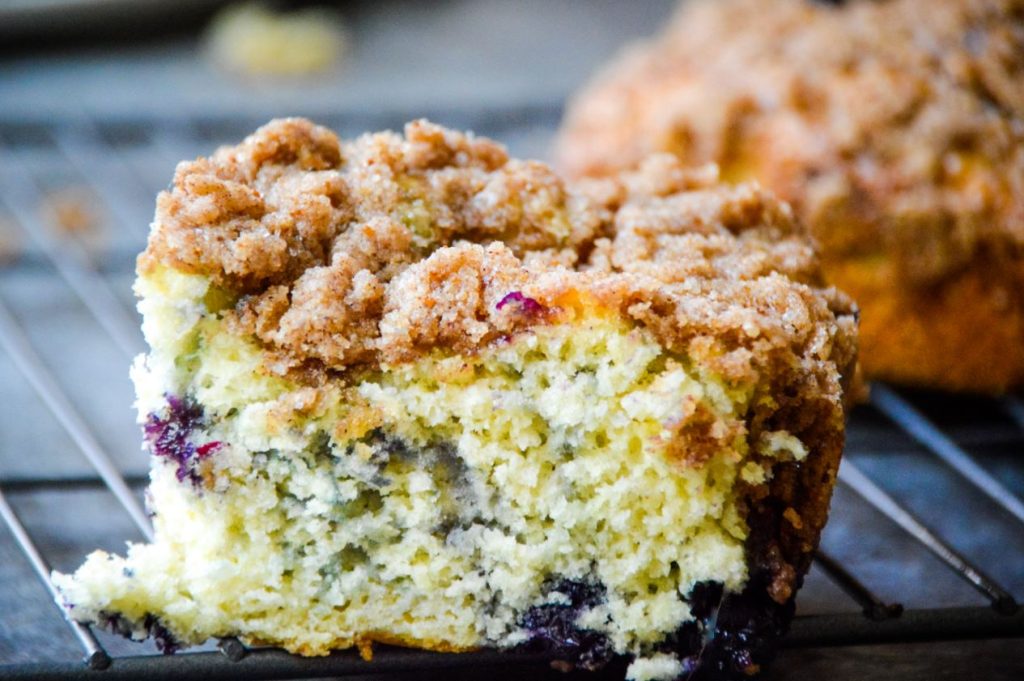
Blueberry: a moist and easy-to-make version, liberally studded with fresh or juicy blueberries and a delicious streusel topping, ideal for breakfast or dessert (Kay’s clean eats).
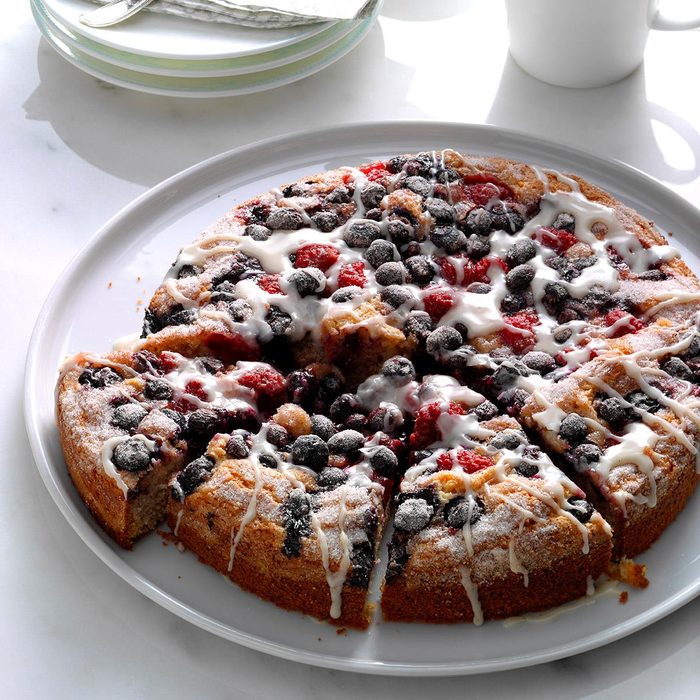
Berry-Topped: loaded with fresh or frozen berries inside and on top, perfect for those with a sweet tooth (Taste of Home).

Maple Bacon: a moist and tender variation that’s both sweet and savory, topped with crumbly bacon and nuts with flavors of maple, nutmeg, and cinnamon (Spirited and then some).
Coffee Drinking as a Relationship Builder Across Cultures
People in different countries, regions, and cultures prepare coffee differently and have various rituals for its preparation and consumption. Some of these rituals are as old as the coffee itself, while others have developed over time as people began to enjoy the drink with other treats, often for the purpose of connection and pleasure, no matter the time and place.
Today, it is estimated that 2.25 billion cups of coffee are consumed per day, equivalent to approximately 1,000 cups per second, 83 billion per month, and over 1 trillion cups every year!
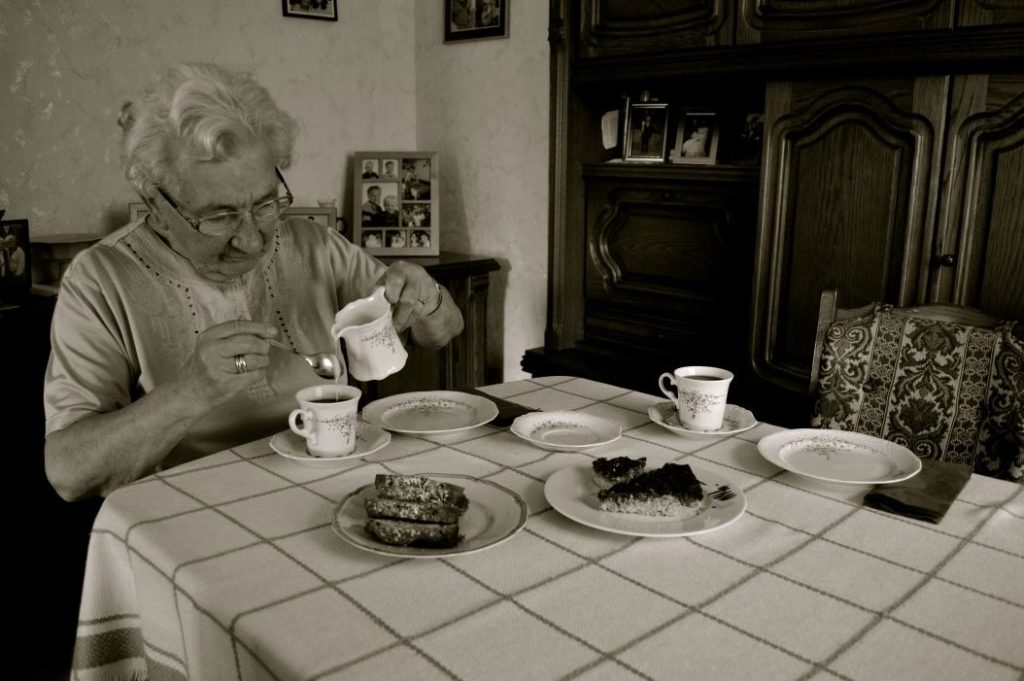
German “Kaffee und Kuchen” (INGRIDINTUEBINGEN)
The German Tradition of Kaffee und Kuchen
Kaffee und Kuchen, meaning “coffee and cake”, is a rooted tradition in Germany, dating back to the 17th century. The German practice involves a social ritual involving a meal with friends and family, any time between two and five in the afternoon to enjoy coffee, cake, and conversation.
It is uncertain when or where the first Kaffee und Kuchen event occurred. All we know is that after coffee was introduced to Germany in 1675, coffee houses began to appear in Hamburg, Bremen, and Hanover.
Despite significant lifestyle changes in modern times, today’s Kaffee und Kuchen culture is still very much alive, bringing people together in a casual atmosphere to enjoy delectable pastries such as coffee cake with their favourite afternoon beverage. Similar traditions exist in neighboring Austria and German-speaking parts of Switzerland.
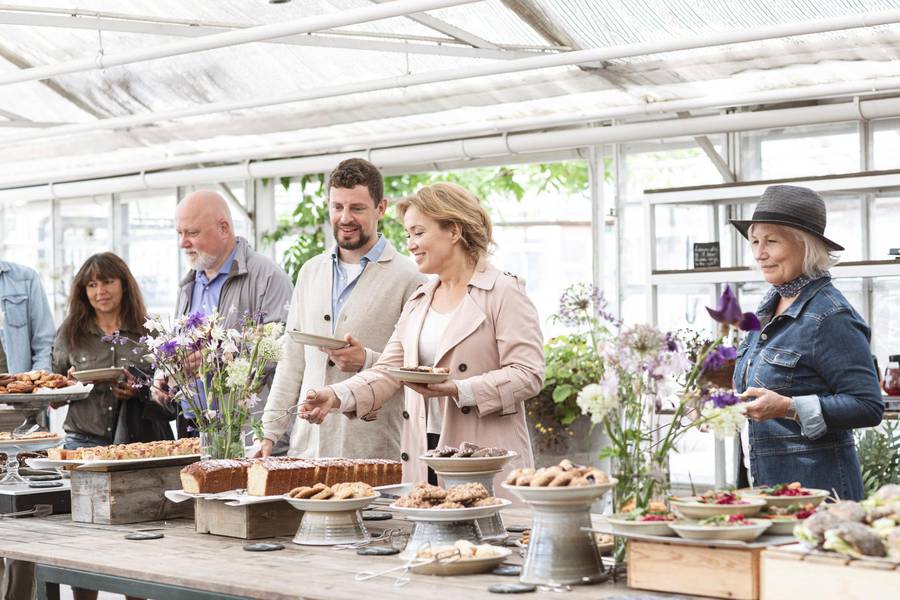
Swedish Fika social break (Visit Sweden)
The Swedish Coffee Tradition of Fika
Sweden’s coffee drinking culture centers around “fika”, pronounced “fee-kuh”, meaning “to have coffee” or “a coffee break”. The word fika can be traced back from the Swedish word “kaffi”, inverted to “fika” as a slang term. For Swedes, it’s a cultural bonding ritual taking place while sipping a classic black drip or boiled coffee, cappuccino, latte, or tea, accompanied by sweet treats or any of the preferred coffee cake flavours.
Fika is not about consuming a cup of coffee in front of your computer. It’s a break from the routine that brings people together and emphasizes sitting down, enjoying the moment, and engaging in conversation with family, friends, or colleagues. You can fika as many times as you like during the day (yes, fika can be used both as a noun and a verb).

Ethiopian traditional coffee ceremony (Level Ground Youtube)
Ethiopian Coffee Drinking Traditions
It is believed that coffee consumption began in Ethiopia. As the coffee trade expanded, it quickly migrated from Africa to Europe, Asia, and beyond. By the late 1800s, coffee had become a global sensation.
Ethiopians gather family and friends to drink coffee and talk about life and bond. Led by young women dressed in traditional Ethiopian garments, the two to three hour ceremony involves roasting and grinding coffee beans and making strong-boiled coffee.
The ceremony includes three cups of coffee – the first called “abol” is the welcoming cup, the second called “tona” continues the spiritual transformation, and the third called “baraka” is a blessing.
Once the coffee is ready to be served, the youngest child brings the first cup to the eldest person present, which ends the ceremony. In modern-day Ethiopia, coffee is still an essential part of daily life and remains a symbol of connection and bonding with friends and family.
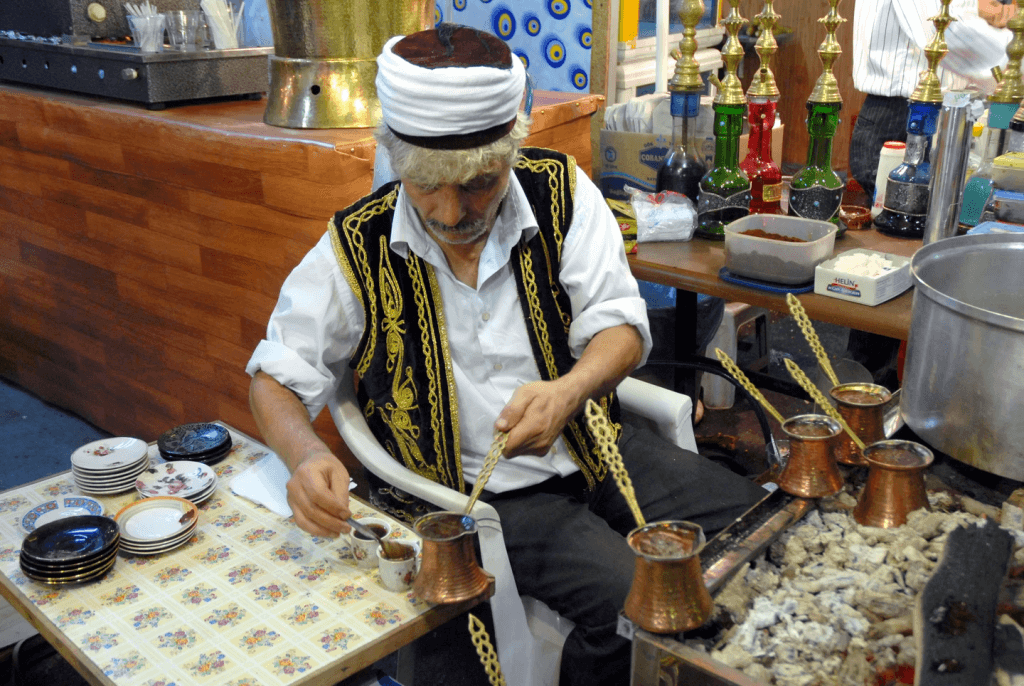
Turkish coffee boiled in a Cezve coffee pot (Culture Trip)
Turkish Coffee Habits
Coffee traditions in Turkey are rooted in hospitality and socializing, with coffee houses serving as popular gathering places. The practice of Turkish coffee-making was introduced by the Ottomans, who brought it back with them from Yemen. People often socialize while drinking coffee in traditional coffee houses around the country.
The traditional brewing process involves very finely ground coffee beans, sugar, and water brought to a boil in a small brass or copper pot with a long handle called a “cezve”. The resulting unfiltered coffee is served in small porcelain cups known as “kahve finjani.”
The Turkish language even uses the term “coffee colour” to describe the colour brown. People often enjoy their strong coffee with sweets on the side. After drinking, the leftover sediment settles at the base of the cup, which can be used for fortune-telling. These rituals are still passed from generation to generation.
Coffee Makes It Possible to Get Out of Bed; Cake Makes It Worthwhile
Whether enjoyed alone or with company, coffee cake and its pairing with coffee, tea, or any other drink of personal preference, is a delightful experience with a rich history and cultural significance. The easy preparation of different coffee cake flavours makes it an ideal treat to share with friends and family. Traditions like Germany’s Kaffee und Kuchen, and Sweden’s fika, have given coffee and cake a special place in social gatherings.
When enjoying coffee and cake, it is essential to savor the moment and engage in conversations with those around you. After all, “coffee makes it possible to get out of bed; cake makes it worthwhile.”




